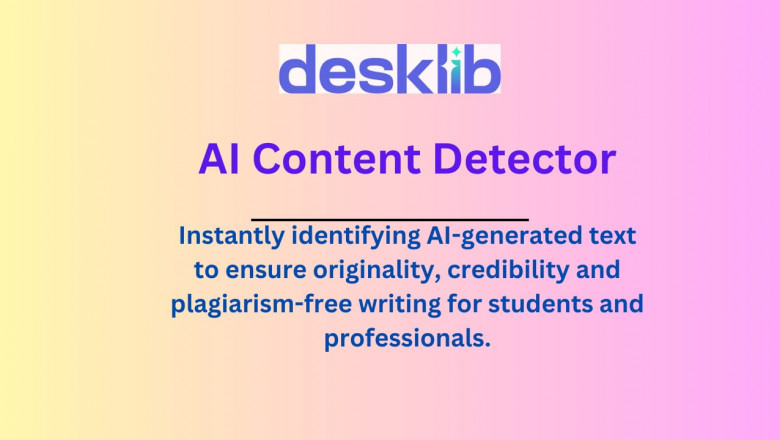views
Artificial intelligence (AI) has revolutionized academic work by assisting students in generating ideas, organizing content, and even producing entire assignments. With the rising application of AI-generated work, universities have started applying AI Content Detectors to verify the originality of work submitted by students. So how accurate are such tools? Do they have the capability to differentiate between AI-generated and human work? Let’s understand how they work, how accurate they are, and what precautions need to be taken by students in applying AI in their work.
How Do AI Detection Tools Function?
An AI Detection Tool scans written work to ascertain whether it is human-generated or AI-generated. These tools scan sentence structure, vocabulary choices, and organization of material and match them against standard AI and human samples of work.
One of the most significant AI detection methods is perplexity analysis. Human texts are less predictable in nature compared to texts written by AI, which typically follow patterns and structures. Using an analysis of word probability and sentence predictability, such tools determine the likelihood of AI involvement.
For instance, Desklib’s AI Content Checker separates the text into sections and examines them individually. It then calculates an AI-generated content percentage and helps the students understand if their work might be flagged.
Are AI-based content detectors always accurate?
Though technology has come a long way, AI Text Detection Tools are far from flawless. Many students have had their human work detected as AI-generated inaccurately. On the other hand, some AI work, particularly when refined, goes undetected. These inaccuracies raise issues regarding the dependability of AI detection tools.
Is AI Detectors Bypassable by Students?
Although attempts can be made by students to rework AI-generated work to escape identification, no approach ensures success. They use the following common methods:
Sentence Reconstruction
Reconstruction
Changing sentence structures and replacing words with their synonyms can at times reduce confidence in AI identification. However, AI-generated text has evident patterns and strong detectors can still identify them.
Utilizing Personal Experiences
AI lacks the ability to produce original personal opinions and experiences. Incorporating real life examples and original opinions lends the material an element of authenticity and reduces the risk of flagging.
Paraphrasing and Synonym Replacement
Some students resort to rewording tools to rephrase AI-generated text. While this may at times go undetected, advanced AI Content Detectors can still identify repeated patterns and unnatural phrasing.
Such practices might work to some extent but are far from foolproof. If an instructor suspects use of AI, a manual inspection can be done and academic consequences can follow. The best approach? Use AI as a tool but have original work in the work submitted.
Best Practices for Using AI in Writing as a Student
As AI technology evolves, responsible usage is crucial. Many universities have yet to establish clear policies, leaving students uncertain about its ethical application. Here’s how students can use AI responsibly:
Use AI as a Support Tool, Not a Replacement
AI can be employed to assist in research, grammar checking and idea development but should not take the place of critical thought. Learners can use AI to enhance their work but should not rely on it exclusively.
Pre-Check with an AI Detector
Students may use an AI Content Checker before submitting their work to prevent any false alarms. Desklib’s AI Content Checker provides an instant originality check.
Edit and Personalize the Text
Reviewing and adding a personal touch despite the use of AI support is essential. Keeping a natural flow and individualized input ensures the highest quality and minimizes the chances of AI identification.
Final Thoughts: Do Students Need to Use AI Content Detectors?
Though AI Content Detectors are valuable in detecting AI-generated work, they are far from foolproof. They may mislabel human work and occasionally fail to detect AI-generated work. In place of relying on detection tools only, students can stress responsible use of AI and double-check work with a reliable AI Content Checker like Desklib. The key? Uphold academic integrity, use AI wisely, and double-check work to prevent mislabeling. Want to ensure original work? Use Desklib’s AI Detector now!





















![Rotary Screener Market Share [2025-2033]](https://timessquarereporter.com/public/upload/media/posts/2025-06/03/rotary-screener-market-share-2025-2033_1748943882-s.jpg)
Comments
0 comment